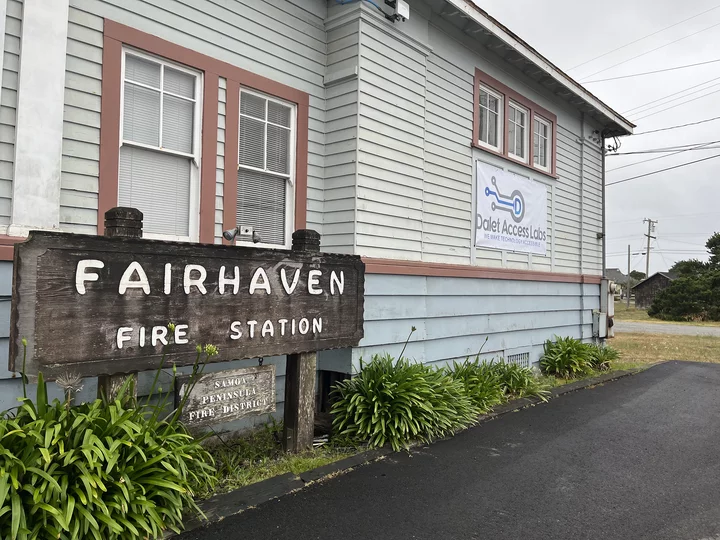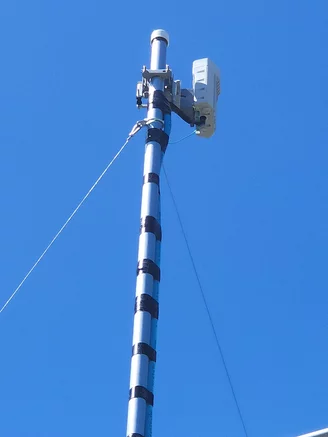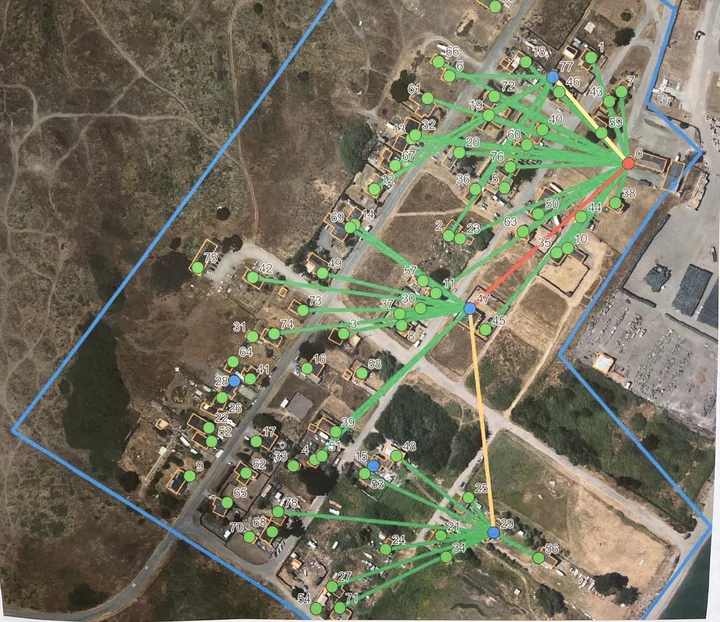Dalet Access Labs center of operations at the Fairhaven Fire Station | Images submitted by the Humboldt County Office of Education
###
The tiny, unincorporated area of Fairhaven recently became one of the coolest places to live in Humboldt, after the community was provided with access to free high-speed internet as a part of a statewide competition designed to help improve broadband connectivity throughout California.
The project – a partnership between Bay Area company Dalet Access Labs, the Humboldt County Department of Education (HCOE) and the Samoa Peninsula Fire District – was completed as a part of the California Digital Divide Innovation Challenge, a competition with a $1 million prize launched by the California Department of Education (CDE) in 2021 to help bridge the state’s digital divide, especially among students and families that were impacted by the switch to digital learning during COVID.
The CDE challenge required that participants work with students experiencing a lack of connectivity, either due to barriers of affordability or infrastructure. According to a press release from the Humboldt County Office of Education, Fairhaven was selected to participate because the area has not consistently had internet service available and many children in the community were not able to participate in distance learning during COVID.
“We wanted to create a solution that could become a model for the rest of rural California and the world,” Colby Smart, assistant superintendent of HCOE, said in a press release. “We created what’s called a ‘low latency mesh network’ that addresses two issues in Humboldt County: The high cost of broadband internet and the availability of broadband internet.”
Odion Edehomon, founder and CEO of Dalet Access Labs, said that the internet service went live on July 1 and offers all the residents of Fairhaven internet with impressive speeds of up to 600 or 700 mbps. Edehomon added that the network operates completely on solar power, which charges batteries that can keep the power running 24/7.
“The network is very transformational,” Edemon told the Outpost in a recent phone interview. “We built it as a critical infrastructure – meaning if all else fails, if PG&E decides, you know they are going to turn the power off over the next 20 years, the network will be the only thing that works, because we built it as an off-grid network.”
The Samoa Fire District’s Fairhaven station was selected as the base of operations because of its proximity to the homes in Fairhaven. From the fire station the network signal is sent out to five antenna nodes installed on the roofs of houses scattered throughout the community, providing service to the 78 homes in Fairhaven.
One of the biggest challenges, Odion said, was figuring out where to install the nodes. Because Fairhaven is located in the coastal zone, permitting for new infrastructure can be a very complicated process, sometimes taking years to allow for new infrastructure. Because this project needed to be completed within the allotted time frame for the CDE challenge, Edehomon said the company decided to work with homeowners to install the nodes on their houses, rather than installing new poles in the ground. This allowed the company to avoid the lengthy permitting process. Not too surprisingly, the homeowners were amenable to the idea. Who wouldn’t be, if it would get you superfast internet for free?
At this point, you might be feeling pretty jealous of the residents of Fairhaven. Internet service is known to be pretty unreliable in many parts of Humboldt and you’re probably wondering, where the heck is my superfast internet that operates off the grid?
Map showing the service area in Fairhaven. The red dot is the fire station and the blue dots represent the antenna nodes
Well, not to worry. Edehomon has big plans to expand service throughout Humboldt County in the coming months and years. The company is already in the process of expanding its infrastructure to Samoa, which should come online by next month, Edehomon said. After that, the service can expand to Manila, then Eureka, Arcata, McKinleyville and beyond. Edehomon said the Dalet Access also plans to offer service to all the local Tribal Nations.
As Dalet Access Labs expands its infrastructure to more areas, Edehomon said, those using its internet service will also have access to open roaming. This means that your high-speed internet connection will travel with you, similarly to cell phone service, and you can use your network on your devices anywhere that has the infrastructure in place. No longer would you need to buy a cup of coffee to use the WiFi at a cafe.
Of course, the service will not be free for everyone. Fairhaven is receiving free service as a part of the CDE challenge, which will be over at the end of August. But Edehomon said that the high-speed service is very affordable and people can expect to pay $80 monthly for the same speed Suddenlink would charge $120 for. For the community of Fairhaven, Edehomon said that CDE is planning to subsidize the cost of service, so that it can continue to be affordable for Fairhaven residents after the challenge is over.
As far as the CDE challenge goes, the winner will be announced at the end of this month and Edehomon feels very confident that this project – which far exceeded the minimum criteria – will win. Edehomon said that his company didn’t just enter this competition to win $1 million, but also to help bridge the digital divide and ensure that rural and underserved communities have access to the technology they need to thrive in the modern world.
“A country like us, as wealthy as we are, the state of our infrastructure is very poor,” Edehomon told the Outpost. “So when you go into communities like Fairhaven, mostly underserved communities all over this country – they are always the last to get any good technology. So for us, we’re doing it the other way around. We prefer the bottom up approach. Why don’t you take this good technology to those that need it most?”



CLICK TO MANAGE